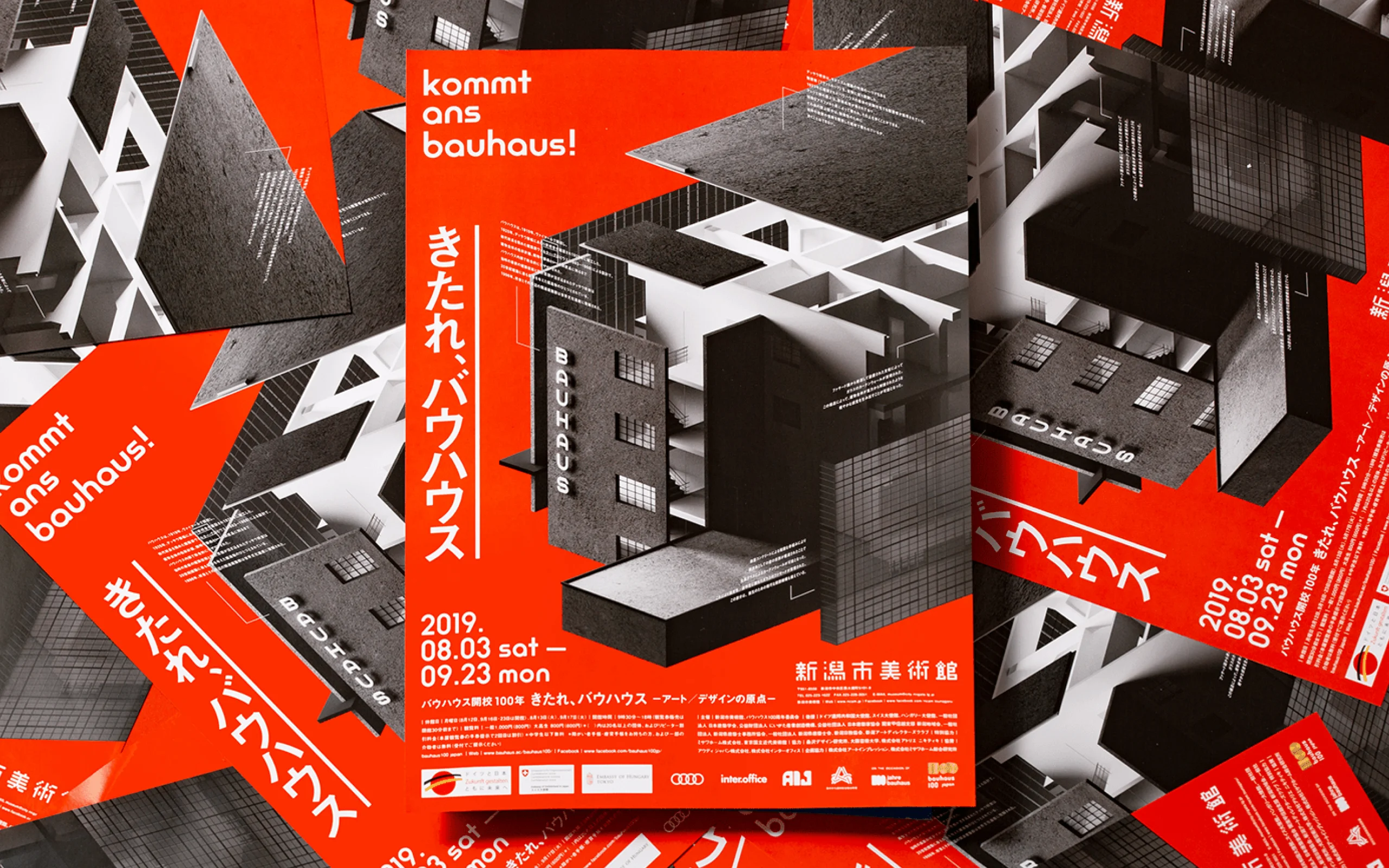
PROJECT
kommt ans bauhaus!
バウハウス100周年を機に、日本で展開されたブランディング。 バウハウスの造形思想を分解し、創造の構造を見える形に表現。
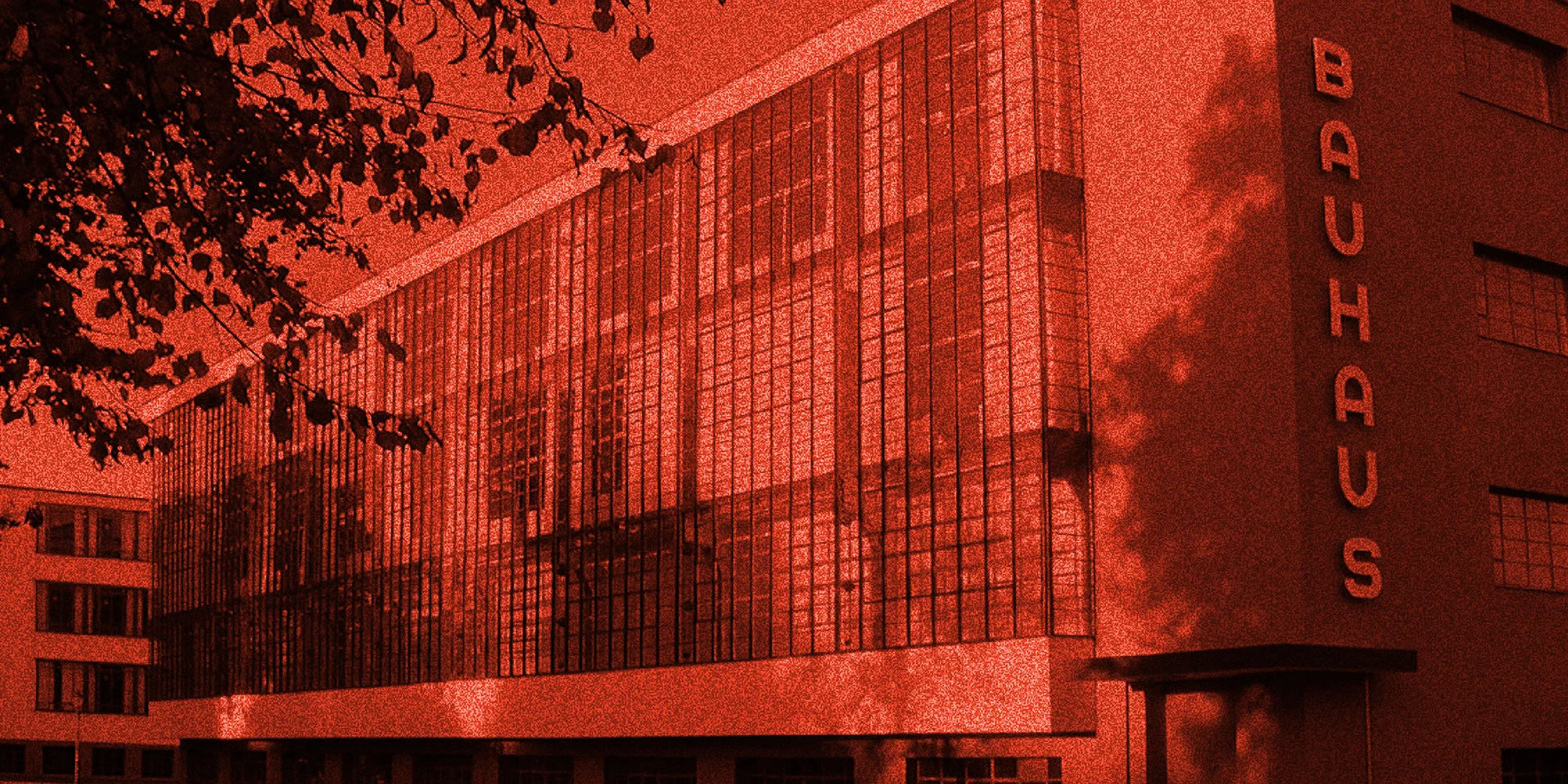
WHY
100年前の伝説の学校から
創造性を学び直すには。
1919年、伝説的な造形芸術学校「バウハウス」が、ドイツ・ワイマールに開校されました。建築家のワルター・グロピウスによって開かれ、ヴァシリー・カンディンスキー、パウル・クレーなど時代を代表する芸術家たちが指導にあたったバウハウスは、生活者の暮らしを豊かにするための知恵としての「デザイン」の考え方を社会に広めた、極めて重要な存在でした。
バウハウスは開校から14年後の1933年にその歴史を閉じますが、その間に数多くの優れた建築家やデザイナーを輩出し、同校の教育方針はいまなおアートやデザインの分野に大きな影響を及ぼし続けています。その背景にあるのは、フレーベルの幼児教育を源流とする革新的な創造性教育のプログラムでした。ゲーテの自然哲学に影響を受け、自然科学のように造形表現を理論と実技の両面から学び、すべての芸術を統合する建築につなげる教育システムを同校は実践していました。その理念から、あらためて現代に必要な創造性を学び直すことはできないのでしょうか。
JP Explain of Graph

HOW
伝説の創造性教育
バウハウスを解剖する。

バウハウスの開校100周年を祝い、日本各地で展覧会やイベントなどを行う「bauhaus100 japan」プロジェクトの総合デザインを担当することになりました。
ロゴの開発にあたっては、バウハウスを象徴するアイコンとしてしばしば用いられる「◯」「△」「□」の造形によって、アニバーサリーを祝福することをデザインコンセプトとしました。そして、2つの円柱、1つの円錐のオブジェを用い、上からは「◯」「△」「□」に、横からは「100」に見える3Dモーションロゴをデザインしました。
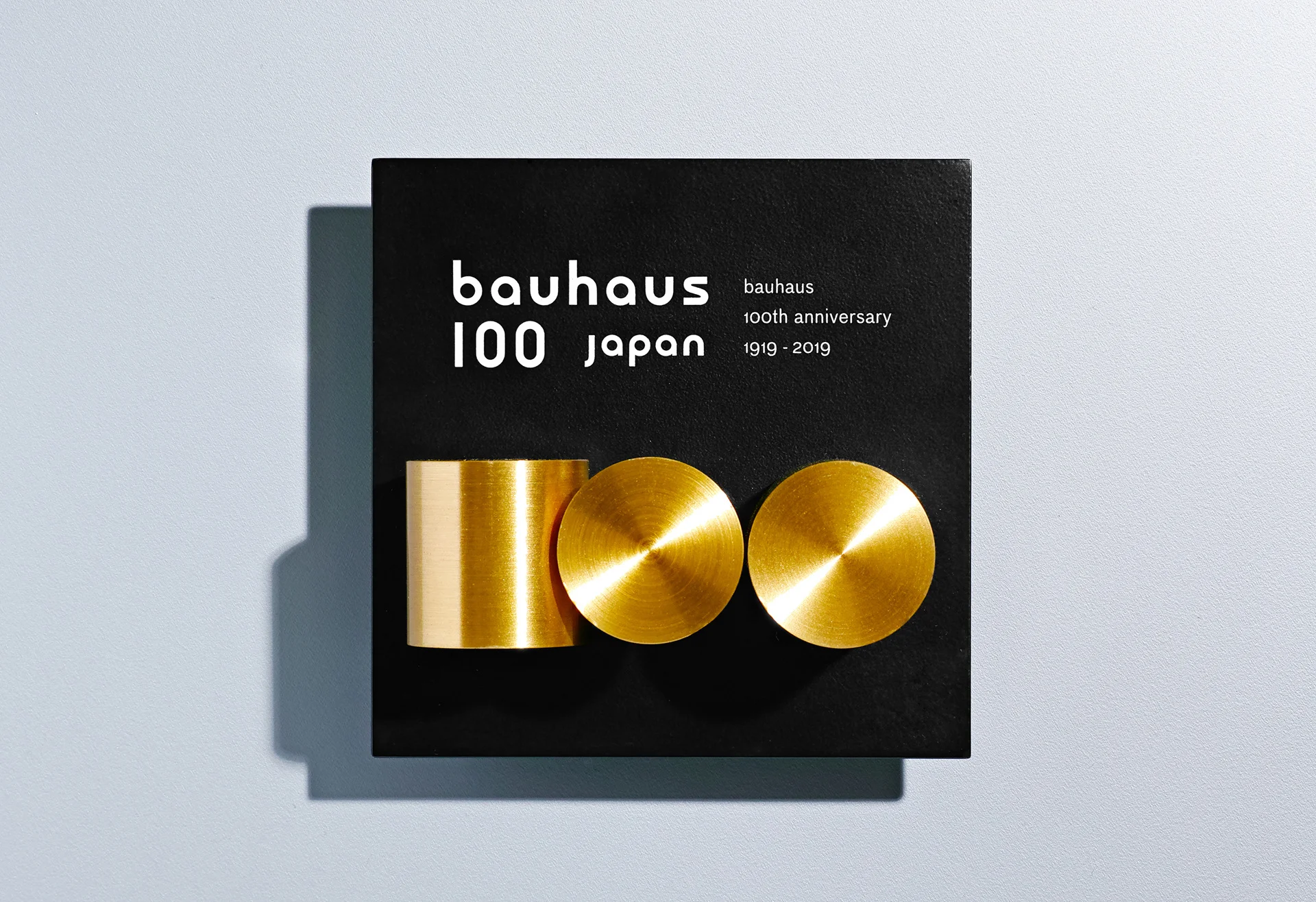
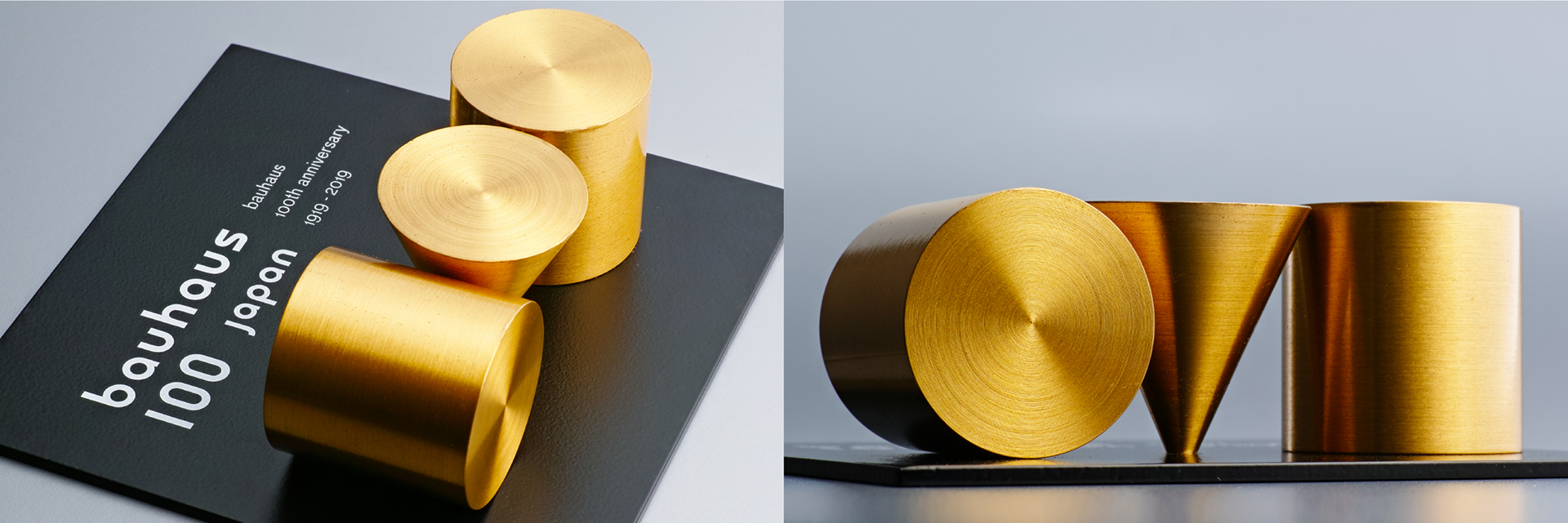
バウハウスの基礎教育に焦点を当てた展覧会『きたれ、バウハウス』のアートディレクションでは、バウハウスを解剖し、この伝説の学校について改めて学ぶことをテーマに据えました。
人体を構成する各器官の形態や構造を機能の観点から分析していく解剖生理学の手法に基づき、バウハウスのアイコン的存在であるグロピウス設計のデッサウ校や同校由来の代表的なプロダクトを分解。各パーツの機能などを分析したヴィジュアルを、展覧会のポスターやチケット、図録などに展開しました。こうした探求を通して形に秘められた意味を理解し、見る人達にとっての創造的な気づきを誘発するデザインを目指しました。
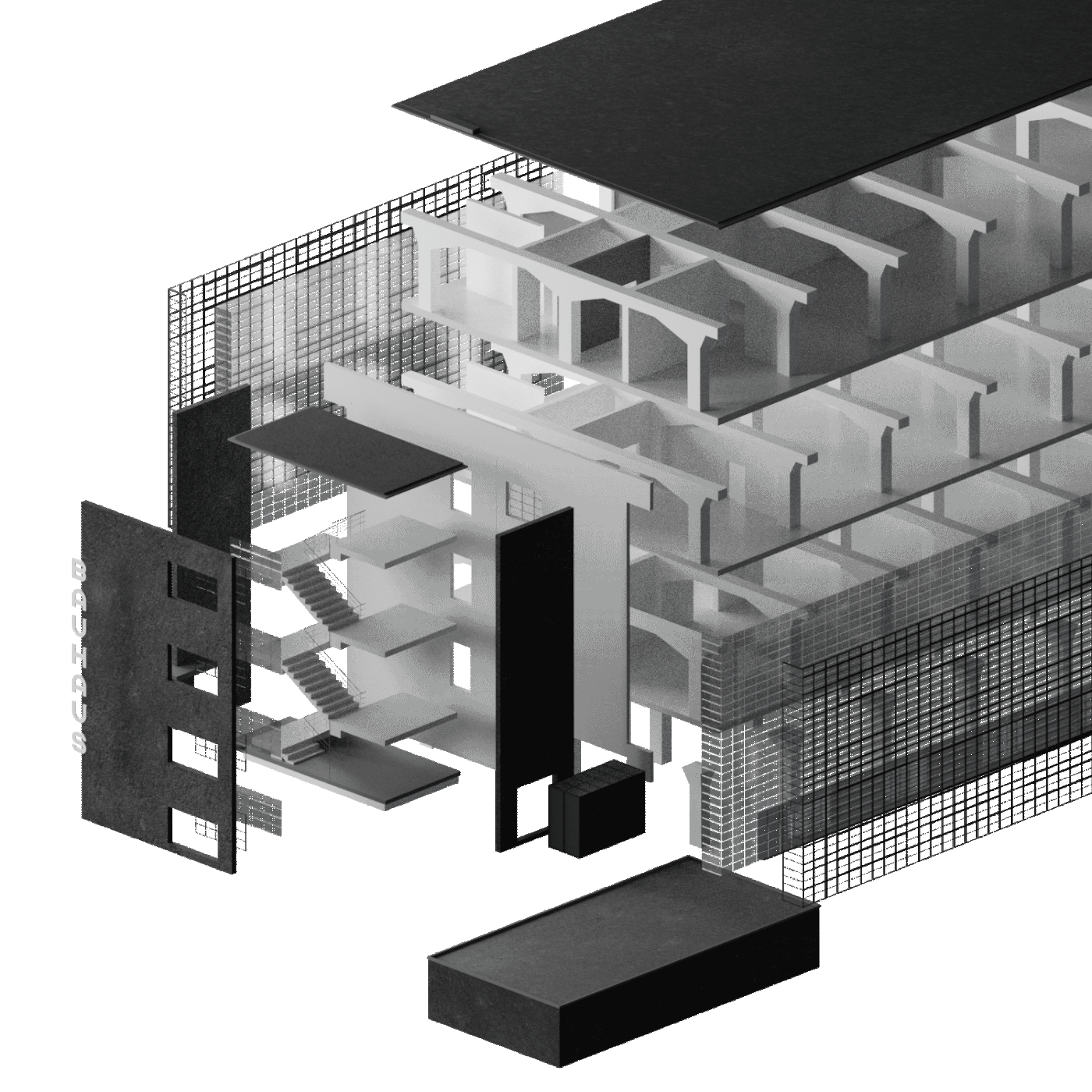
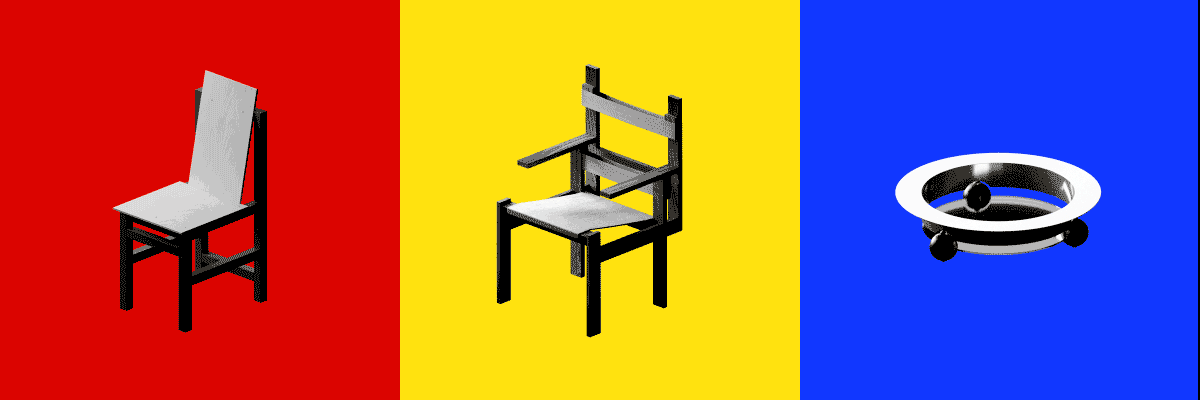
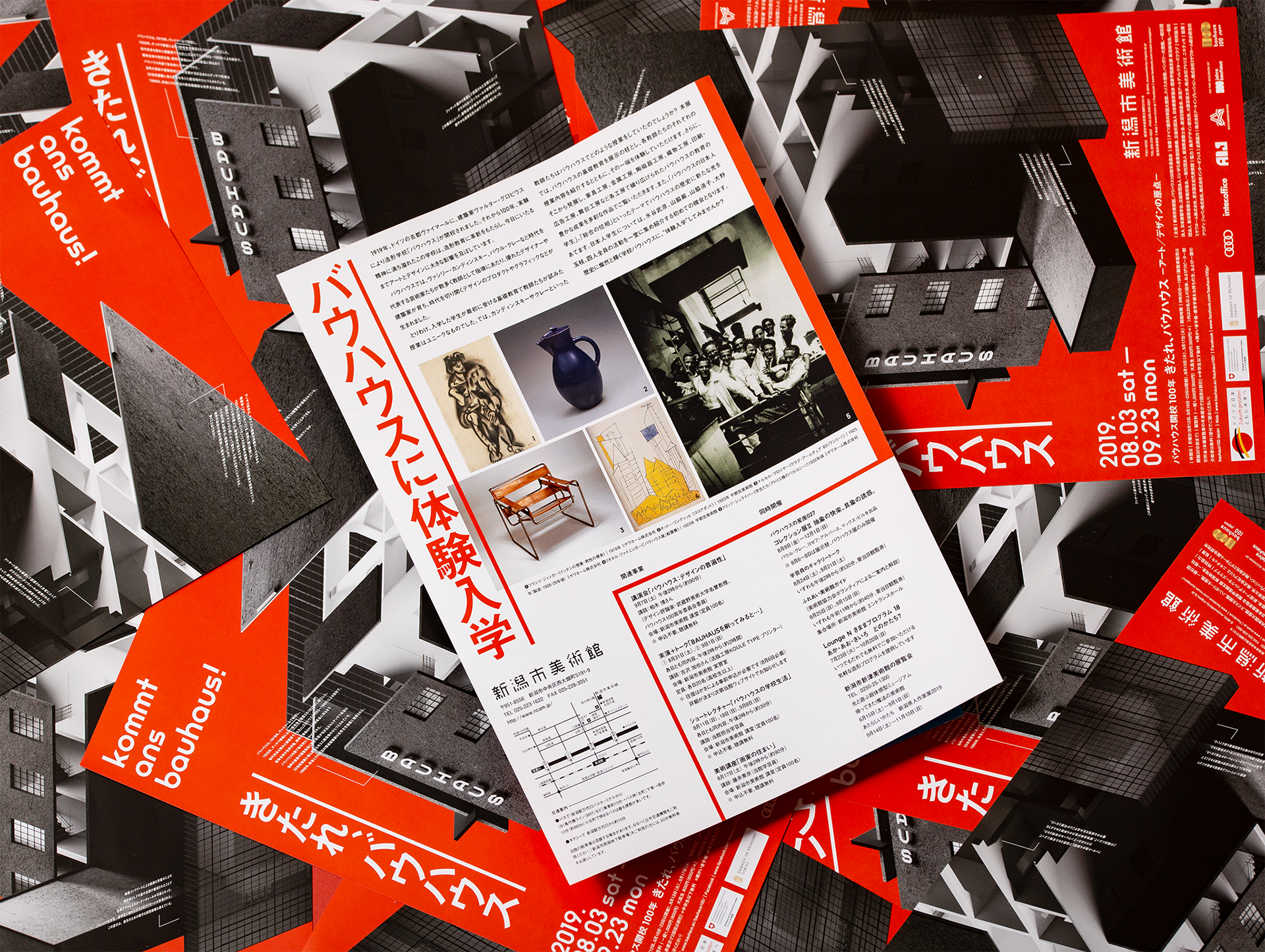

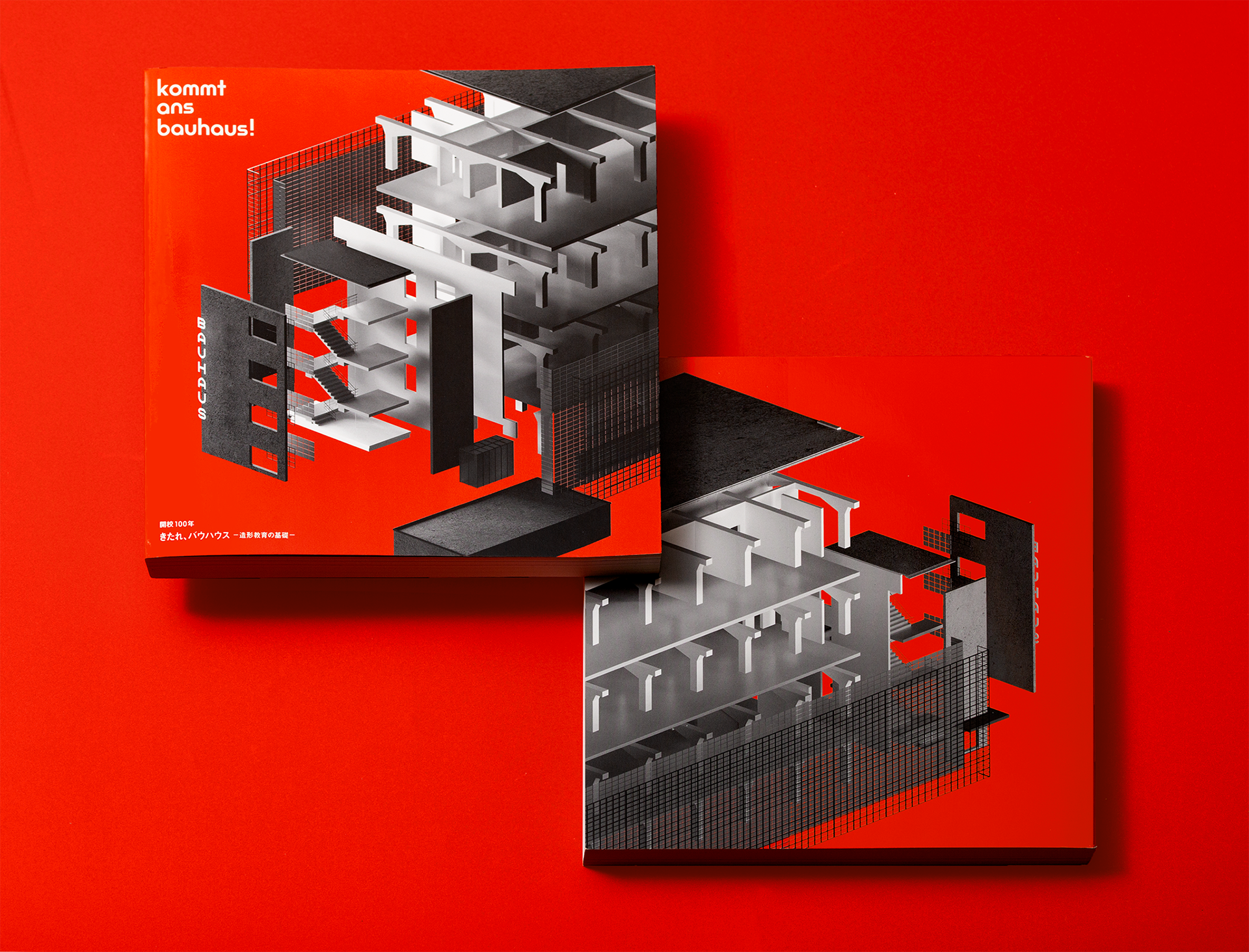
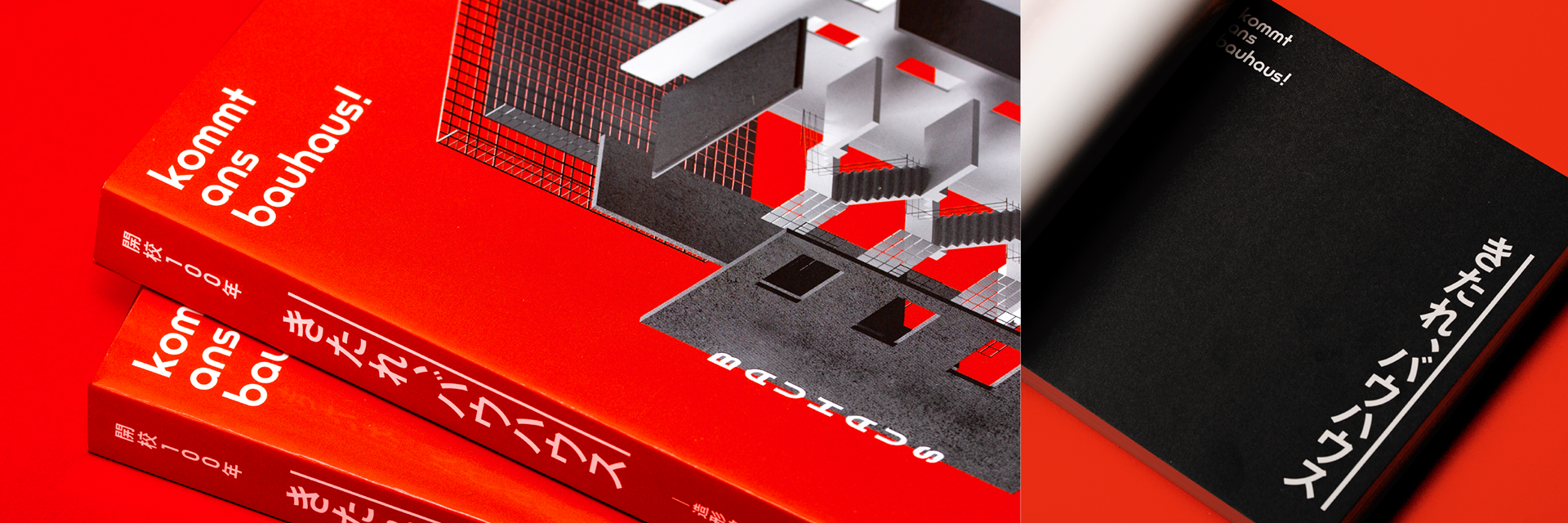
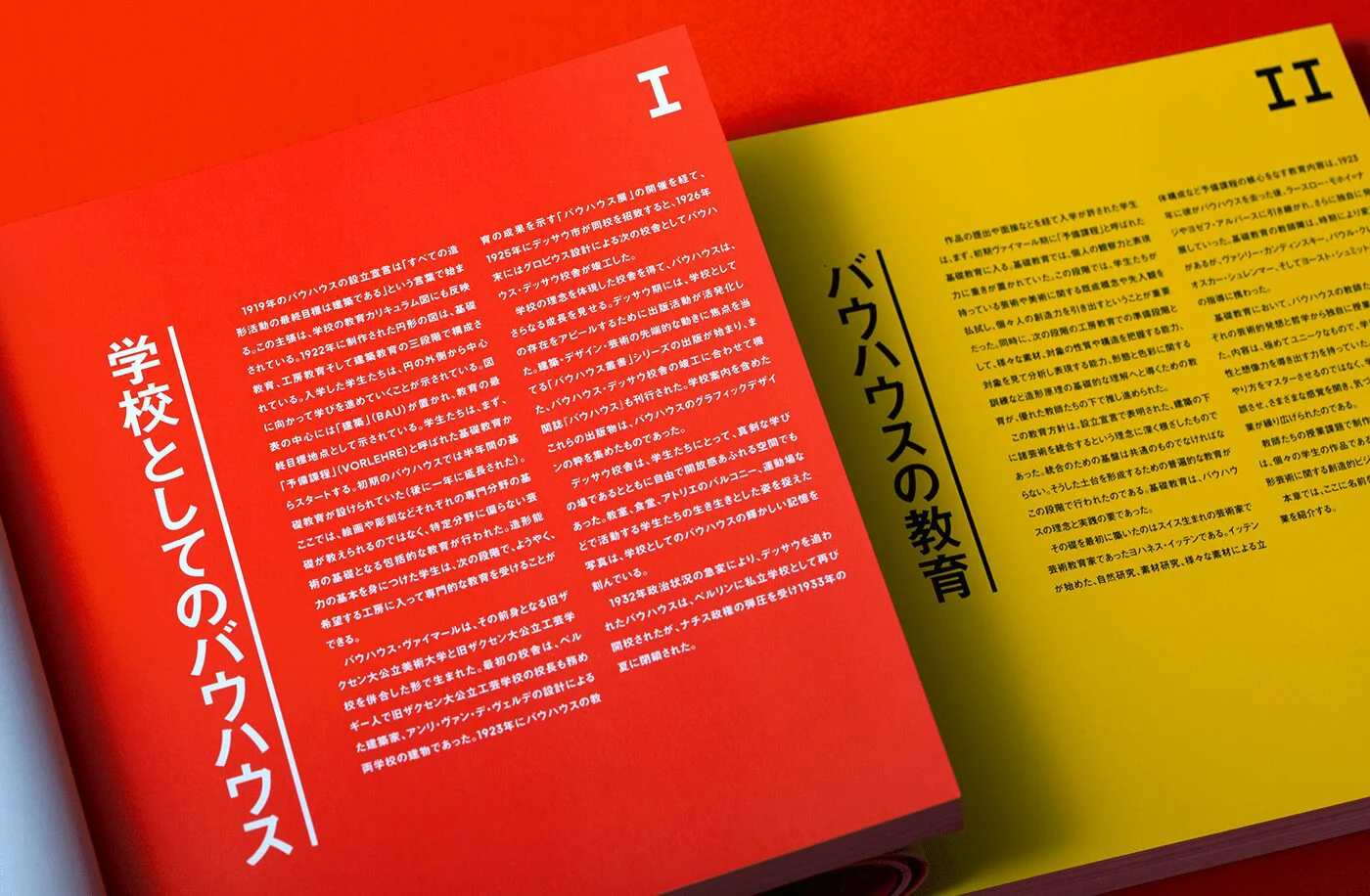
WILL
バウハウスを超える
現代の創造性教育を
生み出すために。
『きたれ、バウハウス』展は、2019年から2020年にかけて日本各地の美術館5館を巡回し、多くの人たちに革新的な造形教育の意義を伝える機会となりました。また、私たち自身もこのプロジェクトのアートディレクションを通じて、改めてバウハウスについて深く学ぶことができました。
バウハウスが主導したモダンデザインは、社会を豊かにすることに貢献しましたが、その後人類は経済合理性を追求し過ぎたあまり、資源の枯渇や気候の変動、貧富の拡大などの課題が地球規模で広がっています。これらの不均衡と向き合うことが現代のデザインにおける課題であり、かつてのバウハウスのような革新的な創造性教育がいまこそ求められています。
こうした状況の中、NOSIGNERの太刀川英輔は、生物の進化にイノベーションのメカニズムを見出した発想法「進化思考」を体系化しました。バウハウスやフレーベルの幼児教育の流れを汲む「自然哲学」にもとづいた創造性教育を現代にアップデートし、新しい創造教育を実現していくことが私たちの目標です。
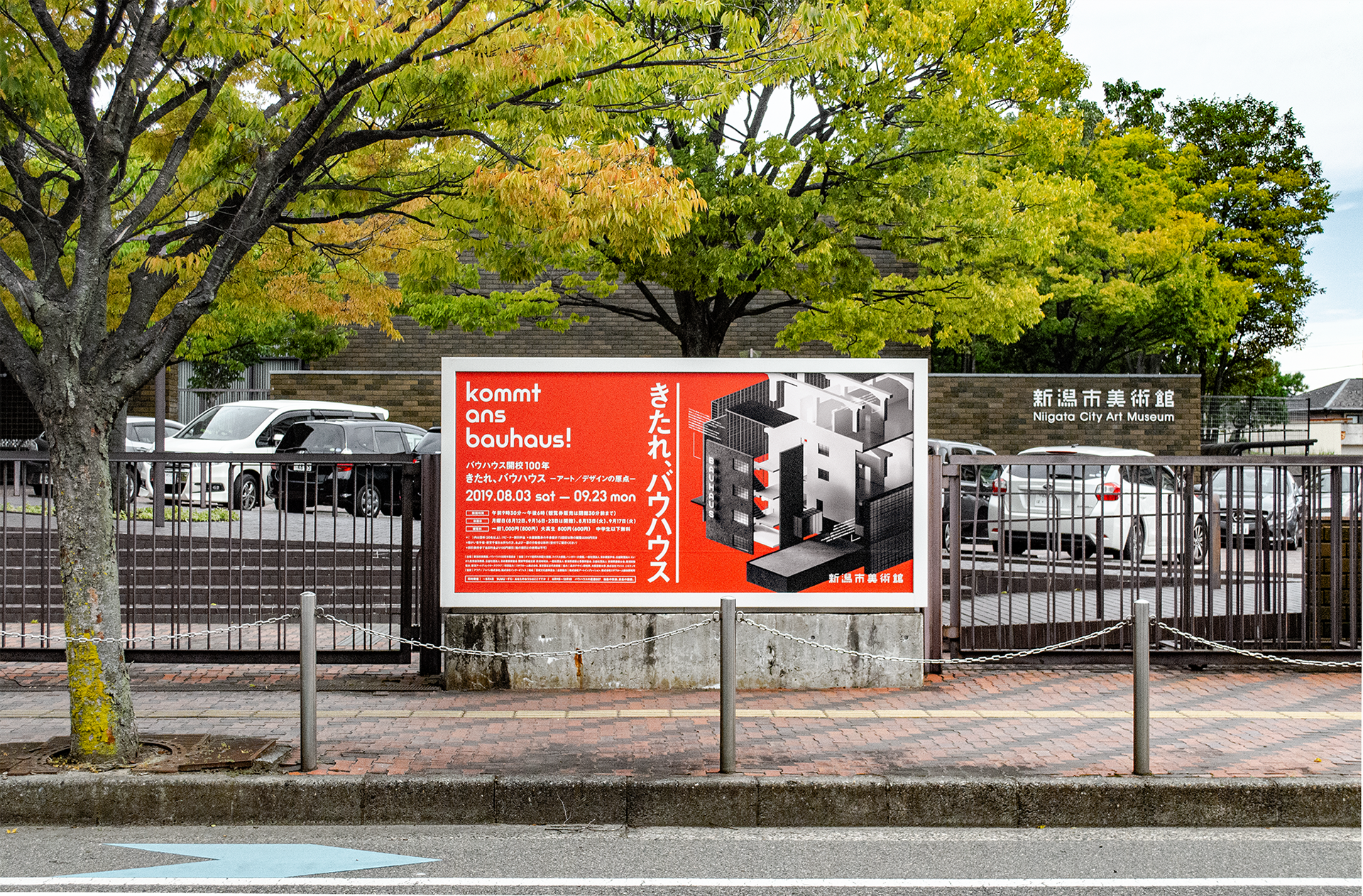
INFORMATION
- What
- kommt ans bauhaus!
- When
- 2017
- Where
- Japan
- Client
- Scope
- Logo / Motion logo / Promotional items / Infographics / Pamphlet / Photograph (社内リリース素材使用のみ) / Product / Book cover / Book cover and inner page design / Space / Exhibition / Poster / CG Modeling
CREDIT
- Art Direction
- NOSIGNER (Eisuke Tachikawa)
- Graphic Design
- NOSIGNER (Eisuke Tachikawa, Tomoro Hanzawa, Toshiyuki Nakaie, Yoshiki Odake)
- CG Modeling
- NOSIGNER (Shunsuke Furukawa, Ryusei Noguchi)
- Motion Design
- NOSIGNER (Tomoro Hanzawa)
- Illustration
- NOSIGNER (Tomoro Hanzawa)
- Photograph
- NOSIGNER (Tomoro Hanzawa), CCDN (Yuichi Hisatsugu)









